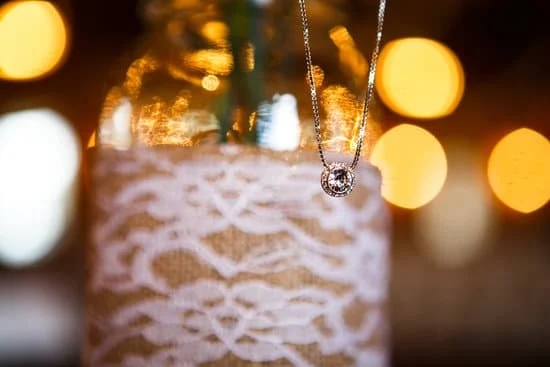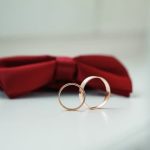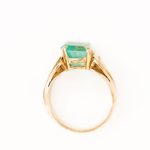Are you interested in learning how to string jewelry beads? Stringing jewelry beads is a timeless art that allows for endless creativity and personal expression. Whether you’re a beginner looking to explore a new hobby or an experienced crafter wanting to refine your skills, understanding the basics of bead stringing is essential. In this article, we’ll walk you through everything you need to know about creating beautiful and durable beaded jewelry.
Before you dive into the world of bead stringing, it’s important to familiarize yourself with the different types of beads available. From glass and crystal to wood and metal, there are countless materials and shapes to choose from. We’ll discuss the various options and their unique characteristics, helping you make informed choices when selecting beads for your projects.
In addition to exploring the types of beads, we’ll also cover the essential tools and materials needed to get started with bead stringing. From beading wire and needles to clasps and crimp beads, having the right supplies on hand is crucial for creating professional-looking jewelry.
By understanding the basics of bead stringing, you’ll be well-equipped to embark on your own creative journey and bring your visions to life. So, let’s delve into the fascinating world of bead stringing and unleash your creativity.
Types of Beads
When it comes to stringing jewelry beads, one of the most important considerations is the type of beads you will be using. There are countless materials and shapes to choose from, each with its own unique characteristics and qualities. By understanding the different types of beads available, you can create stunning and diverse pieces of beaded jewelry that are truly one-of-a-kind.
Here are some of the most common types of beads used in jewelry making:
- Seed beads: These small, round beads come in a wide range of colors and are often used for intricate bead weaving and embroidery.
- Gemstone beads: Made from natural minerals, gemstone beads are prized for their unique patterns, colors, and metaphysical properties.
- Glass beads: Available in a variety of finishes and styles, glass beads offer versatility and affordability for creating both casual and elegant jewelry designs.
- Metal beads: Whether they are sterling silver, gold-filled, or base metal, metal beads add a touch of luxury and sophistication to any beaded creation.
- Wooden beads: Earthy and organic, wooden beads bring a natural element to jewelry designs while offering lightweight wearability.
When choosing which types of beads to use in your jewelry designs, consider factors such as color scheme, texture, weight, durability, and overall aesthetic. Experiment with combining different materials and shapes to create visually dynamic pieces that reflect your personal style.
Remember that each type of bead requires its own specific techniques for stringing onto wire or thread. Understanding how to work with different materials will ensure that your finished creations not only look beautiful but also withstand the test of time. Learning how to string jewelry beads in a way that showcases their individual characteristics will elevate your craftsmanship to the next level.
Essential Tools and Materials
Stringing jewelry beads is a versatile and creative craft that can result in beautiful and unique pieces. Before you begin, it’s essential to have the right tools and materials to ensure the process goes smoothly. Here’s a guide to help you understand what you’ll need to get started.
First and foremost, you’ll need beads – lots of them. Beads come in a wide variety of materials, shapes, sizes, and colors. Some popular options include glass, crystal, metal, wood, and gemstone beads. It’s important to choose high-quality beads that will not only look great but also hold up well over time.
In addition to beads, you’ll need stringing materials such as beading wire, stretch cord, or silk thread. The choice of stringing material will depend on the type of project you’re working on and the desired durability. For example, if you’re creating a delicate bracelet, silk thread may be a suitable option; however, for more durable pieces like necklaces or bracelets with heavy beads, beading wire would be more appropriate.
Having the right tools is also crucial for successfully stringing jewelry beads. This includes items like scissors for cutting stringing materials, pliers for crimping and securing clasps, bead boards or mats for organizing your design layout, and needles for threading smaller or finer beads. A sturdy work surface with good lighting is another essential tool to ensure your comfort and accuracy while working on your bead stringing projects.
| Tool/Material | Description |
|---|---|
| Beads | Comes in various materials such as glass, crystal, metal, wood & gemstones |
| String Materials | Options include beading wire stretch cord & silk thread |
| Tools | Essential tools: scissors pliers bead boards/mats & needles |
Step-by-Step Tutorial
Gathering Your Tools and Materials
Before you start stringing your jewelry beads, it’s essential to gather all the necessary tools and materials. You will need beads of your choice, beading wire or thread, clasps, crimp beads, wire cutters, and flat nose pliers. Make sure to choose a beading wire or thread that suits the size and weight of your beads. Additionally, consider the design of your jewelry piece and whether you’ll need any additional findings or spacers.
Preparing Your Beads
Once you have everything you need, it’s time to prepare your beads for stringing. If using beading wire, attach a clasp to one end using a crimp bead and flatten it with the flat nose pliers. Then, start threading your beads in the desired pattern or arrangement.
If using thread, tie a knot at one end and begin threading your beads. To prevent the beads from sliding off while working on your jewelry piece, consider adding a bead stopper at the opposite end.
Stringing Your Beads Like a Pro
To string your jewelry beads like a pro, keep in mind that consistency is key. Ensure that there is an even amount of space between each bead for a polished look. Use your flat nose pliers to secure the other end of the clasp if using beading wire or tie a knot if using thread. Before finalizing everything, check for any gaps or unevenness in the threading to make adjustments as needed.
Now that you’ve learned how to prepare and string jewelry beads like a pro, you can move on to finishing techniques and creating stunning beaded designs that showcase your unique style and creativity.
Tips and Tricks for Creating Beautiful and Durable Beaded Jewelry
When it comes to creating beautiful and durable beaded jewelry, there are several tips and tricks that can help you elevate your designs. From choosing the right materials to mastering essential techniques, these tips will guide you in creating stunning pieces that will last.
Choose High-Quality Materials
The first step in creating durable beaded jewelry is to choose high-quality materials. Opt for sturdy beading wire or thread that is designed to withstand regular wear and tear. Additionally, make sure to select beads made from strong materials such as glass, gemstones, or metal. Using high-quality materials will not only improve the durability of your jewelry but also enhance its overall aesthetic appeal.
Master Proper Stringing Techniques
To ensure that your beaded jewelry remains beautiful and intact, it’s essential to master proper stringing techniques. Make sure to create secure knots at the beginning and end of your design to prevent beads from slipping off. Additionally, learn how to use crimp beads or tubes to secure the ends of your beading wire or thread. By mastering these techniques, you can create jewelry that withstands daily wear without coming apart.
Consider Adding Structural Support
Incorporating structural support into your designs can significantly increase the durability of your beaded jewelry. Utilize spacer beads, bead caps, or seed beads strategically throughout your design to provide additional stability. These elements not only add visual interest but also help distribute the weight of the beads more evenly, reducing strain on the stringing material.
By following these tips and tricks for creating beautiful and durable beaded jewelry, you can take your designs to the next level while ensuring their longevity. With careful consideration of materials, mastering essential techniques, and incorporating structural support, you can create stunning pieces that stand the test of time.
Adding Charms and Pendants
Charms and pendants are a great way to add personality and style to your beaded jewelry creations. These small embellishments can elevate a simple beaded design and make it truly unique. Whether you want to create a meaningful piece for yourself or a special gift for someone else, adding charms and pendants can take your bead stringing to the next level.
When choosing charms and pendants for your jewelry designs, consider the theme or style you want to achieve. From delicate floral motifs to fun animal shapes, there are countless options available to suit any aesthetic. Additionally, consider the size of the charm or pendant in relation to the beads you are using. You want them to complement each other without overpowering the design.
To attach charms and pendants to your beaded jewelry, you will need jump rings or head pins depending on the type of charm or pendant. For flat-backed charms, you can use jump rings to connect them securely to your beadwork.
For pendants with a top loop, you can thread a head pin through the hole, create a loop at the top using jewelry pliers, and then attach it to your beaded design. This step requires precision and attention to detail, so take your time when attaching these embellishments.
Once you have added your chosen charms and pendants, take a step back and assess the overall look of your beaded creation. Make any adjustments as needed until you are satisfied with the placement and balance of each charm or pendant. With practice and creativity, you can elevate your beaded jewelry designs by adding these charming embellishments in a way that reflects your unique style.
Finishing Techniques
Once you have carefully strung all your jewelry beads, it is important to ensure that they are securely attached and properly finished. This not only adds a professional touch to your creations but also ensures that your jewelry is durable and long-lasting. There are several techniques you can use to secure and complete your beaded designs, and we will explore some of the most popular ones below.
One common method for finishing off a beaded design is using clamshell bead tips or knots. Clamshell bead tips are small findings that conceal the knot at the end of a strand of beads, providing a neat and polished look.
On the other hand, knots can also be used to finish off a piece of beaded jewelry, especially when working with materials like pearls or gemstone beads. It’s essential to learn how to tie secure knots or use clamshell bead tips effectively to ensure that your jewelry pieces are well-finished.
Another popular technique for completing beaded designs is using crimp beads or tubes. Crimp beads are small metal findings that can be flattened to secure the ends of beading wire, while crimp tubes can also be used in a similar manner.
Using crimps allows you to attach clasps and other findings to your beaded designs, providing a secure closure for necklaces, bracelets, and anklets. Mastering the art of using crimp beads or tubes is essential for anyone interested in creating their own beaded jewelry.
Lastly, adding a clasp or closure is an essential part of completing any piece of beaded jewelry. There are various types of clasps available, including lobster clasps, spring rings, toggle clasps, and more. Choosing the right clasp for your design is crucial as it not only adds functionality but also contributes to the overall aesthetic of your creation. Understanding how to attach clasps securely and neatly is an important skill in finishing off your beaded jewelry pieces.
| Technique | Description |
|---|---|
| Clamshell Bead Tips/Knots | Conceals knots at the end of a strand of beads |
| Crimp Beads/Tubes | Secures ends of beading wire and facilitates attachment of clasps |
| Clasps/Closures | Essential for securing and completing any piece of beaded jewelry |
Inspiration and Ideas
Finding inspiration and developing your own unique style in bead stringing can be a fun and rewarding process. Whether you’re a beginner or an experienced jewelry maker, there are countless ways to explore your creativity and create beautiful designs. Here are some tips on how to find inspiration and develop your own unique style in bead stringing.
One way to find inspiration for your bead stringing projects is to explore different color palettes and combinations. Look for color schemes that resonate with you or reflect the mood or theme you want to convey in your jewelry pieces. You can draw inspiration from nature, fashion trends, art, or even your favorite music and movies. Experiment with contrasting or complementary colors to create visually striking designs that reflect your personal style.
Another way to develop your unique style is to experiment with different bead shapes, sizes, and textures. Play around with mixing and matching different types of beads to create interesting patterns and visual interest in your jewelry pieces.
Don’t be afraid to think outside the box and use unconventional materials or unconventional combinations that reflect your individuality. By experimenting with various techniques such as knotting, weaving, or wire wrapping, you can add dimension and character to your bead stringing projects.
Finally, don’t be afraid to let your personality shine through in your bead stringing designs. Whether it’s incorporating meaningful charms or pendants, using symbolic beads, or infusing cultural influences into your creations, adding personal touches can make your jewelry pieces truly one-of-a-kind. Embracing your individuality and expressing it through your bead stringing projects will ultimately lead you to discover and develop your own unique style in jewelry making.
Overall, finding inspiration and developing a unique style in bead stringing is about exploring what resonates with you personally while also honing in on technical skills such as how to string jewelry beads effectively. Keep experimenting, keep learning from other artists’ work, and trust yourself as you continue creating beautiful beaded masterpieces.
Troubleshooting
When it comes to stringing jewelry beads, you may encounter some common problems along the way. However, with the right knowledge and skills, you can easily overcome these challenges and create beautiful and durable beaded jewelry. Here are some of the most common problems that bead stringers face and how to troubleshoot them.
One common issue is beads breaking or chipping while stringing. This can happen when using low-quality or fragile beads, or when applying too much pressure while stringing them. To overcome this problem, be sure to use high-quality, durable beads and handle them with care. Additionally, consider using a beading needle or a bead reamer to gently widen the holes of smaller beads before stringing them.
Another common problem is beads not staying in place once strung. This can occur if the stringing material is too slippery or if the knots are not tied securely. To overcome this issue, choose a suitable stringing material such as nylon-coated stainless steel wire or waxed cotton cord for better grip. Make sure to tie secure knots at the ends of your jewelry piece to prevent beads from shifting.
Lastly, tangling and knotting of the stringing material can also be a frustrating problem when stringing jewelry beads. To avoid this, keep your workspace organized and invest in a bead board or bead mat to keep your materials in place. When storing your finished pieces, consider using jewelry pouches or individual compartments in a storage container to prevent tangling.
By being aware of these common problems and implementing these troubleshooting tips, you can enhance your bead stringing skills and create stunning pieces of beaded jewelry with ease and confidence.
Conclusion
In conclusion, learning how to string jewelry beads is a rewarding and creative endeavor that allows you to express your personal style and creativity. By understanding the basics of bead stringing, exploring different types of beads, and acquiring the essential tools and materials, you can begin creating your own beautiful beaded jewelry.
The step-by-step tutorial provided in this article will help you develop the skills needed to string beads like a professional, while the tips and tricks shared will ensure that your creations are both stunning and durable.
Furthermore, adding charms and pendants to your beaded designs can elevate them to new levels of beauty and uniqueness. By mastering finishing techniques for securing and completing your beadwork, you can ensure that your jewelry pieces are not only visually appealing but also long-lasting. Finding inspiration for your bead stringing projects and discovering your unique style is also essential in creating truly one-of-a-kind pieces.
Finally, despite any common problems or challenges that may arise in the process, it’s important to remember that practice makes perfect when it comes to mastering the art of bead stringing. With dedication and patience, you can overcome any obstacles and continue on your journey to creating your own masterpieces. So don’t hesitate-embrace the art of bead stringing today and let your creativity shine through in every piece of jewelry you make.
Frequently Asked Questions
How Do You Put Beads on String Easily?
Putting beads on a string can be made easier by using a collapsible eye needle, which allows you to thread the beads without any hassle. You can also use a piece of tape at the end of the string to help guide the beads on.
How Do You Tie Off String of Beads?
To tie off a string of beads, you can simply tie a double knot at the end of the last bead. Make sure to pull the knot tightly to secure the beads in place. You can also add a drop of clear nail polish or glue to further secure the knot.
What Do I Need to String a Bead Necklace?
Stringing a bead necklace requires several materials such as beads of your choice, a strong and flexible beading cord or wire, a clasp for closing the necklace, and pliers for attaching the clasp. Additionally, you may need crimp beads to secure the ends of the cord or wire.
It’s important to have all these materials ready before starting your bead necklace project.

Welcome to my jewelry blog! My name is Sarah and I am the owner of this blog.
I love making jewelry and sharing my creations with others.
So whether you’re someone who loves wearing jewelry yourself or simply enjoys learning about it, be sure to check out my blog for insightful posts on everything related to this exciting topic!





